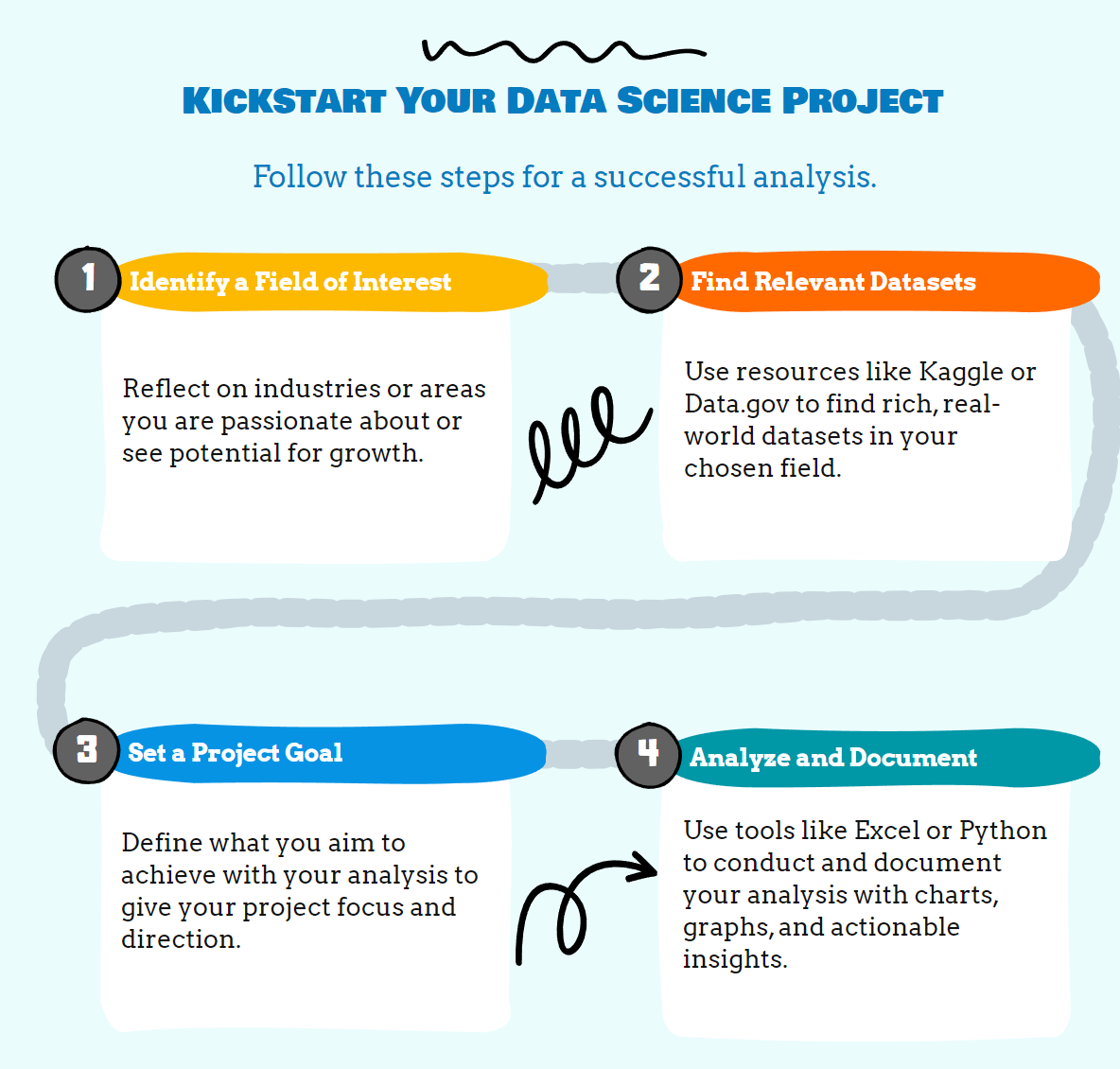1. Self-Initiated Projects: Creating Your Own Experience
Rishi’s first realization was that waiting for an employer to give him the opportunity to work with data was not a viable strategy. He needed to take matters into his own hands and create his own projects, transforming theoretical knowledge into practical skills.
Example:
Rishi had always been fascinated by e-commerce, intrigued by how online retailers harness data to understand customer behavior. He decided to dive into this field, beginning with publicly available datasets. After some research, he found a comprehensive dataset on Kaggle that tracked customer purchases across various online stores.
Rishi’s project aimed to uncover patterns in customer behavior that could help improve retention rates—a challenge faced by many e-commerce businesses. He meticulously cleaned the data, identified key metrics, and used tools like Excel and Python to analyze the data. Over several weeks, Rishi’s analysis revealed valuable insights, such as the impact of seasonal sales on customer loyalty and the correlation between product recommendations and repeat purchases.
Example:
Rishi had always been fascinated by e-commerce, intrigued by how online retailers harness data to understand customer behavior. He decided to dive into this field, beginning with publicly available datasets. After some research, he found a comprehensive dataset on Kaggle that tracked customer purchases across various online stores.
Rishi’s project aimed to uncover patterns in customer behavior that could help improve retention rates—a challenge faced by many e-commerce businesses. He meticulously cleaned the data, identified key metrics, and used tools like Excel and Python to analyze the data. Over several weeks, Rishi’s analysis revealed valuable insights, such as the impact of seasonal sales on customer loyalty and the correlation between product recommendations and repeat purchases.
Steps:
- Identify a field of interest: Reflect on industries or areas that you are passionate about or where you see potential for growth. Rishi chose e-commerce because of its dynamic nature and his personal interest.
- Find relevant datasets: Utilize online resources like Kaggle, Data.gov, or Google Dataset Search to find datasets that match your chosen field. These datasets are often rich with real-world data, offering a sandbox for you to explore.
- Set a project goal: Define what you want to achieve with your analysis. Rishi’s goal was to understand customer retention patterns, which gave his project focus and direction.
- Analyze and document: Conduct your analysis using tools you’re familiar with, like Excel, Google Sheets, or Python. Document your findings thoroughly, creating reports or presentations that showcase your insights. Rishi’s report included charts, graphs, and actionable recommendations, making it a valuable portfolio piece.
Write your awesome label here.

Write your awesome label here.
2. Contribute to Open Source Projects: Collaboration and Real-World Impact
Understanding that data analysis is often a collaborative effort, Rishi sought opportunities to work with others on meaningful projects. He turned to open source communities, where developers and analysts from around the world contribute to projects that impact real-world problems.
Example:
Rishi joined GitHub, a platform well-known for hosting open-source projects. After exploring various projects, he came across one focused on analyzing COVID-19 data. The project was aimed at helping local governments understand the spread of the virus and allocate resources more effectively.
Rishi volunteered to help with data cleaning and visualization, tasks that aligned with his growing skill set. Through his contributions, Rishi gained experience in working with real-time data, collaborating with a team, and understanding the complexities of public health data.
Rishi joined GitHub, a platform well-known for hosting open-source projects. After exploring various projects, he came across one focused on analyzing COVID-19 data. The project was aimed at helping local governments understand the spread of the virus and allocate resources more effectively.
Rishi volunteered to help with data cleaning and visualization, tasks that aligned with his growing skill set. Through his contributions, Rishi gained experience in working with real-time data, collaborating with a team, and understanding the complexities of public health data.


